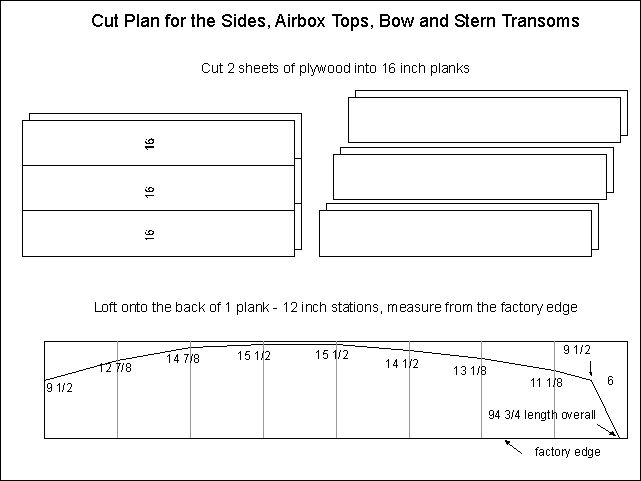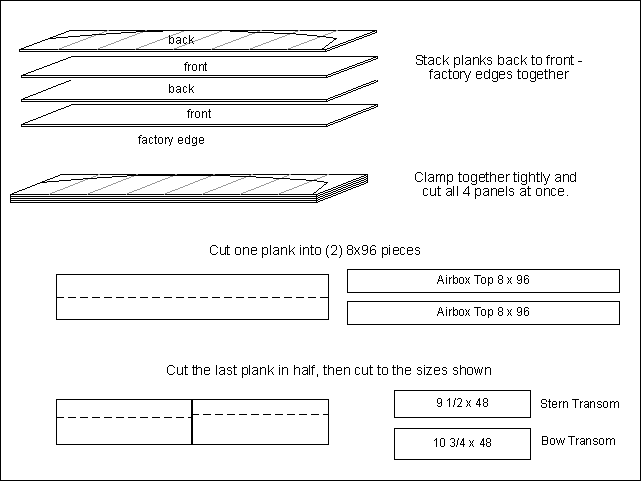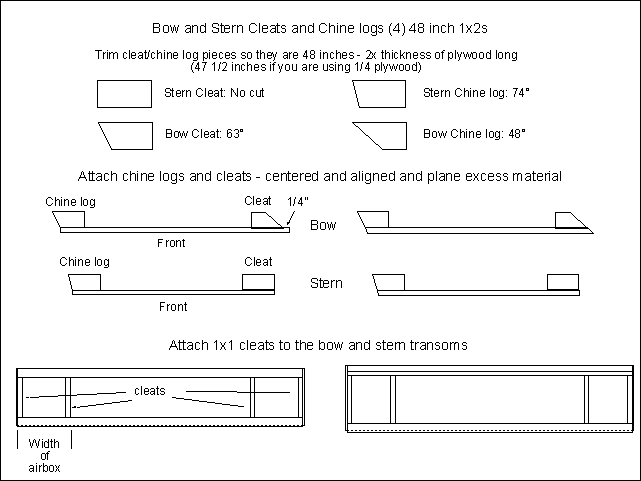
|
Plans and Instructions for a 'Duck
with 16" sides, and 8" side airboxes from (4) sheets of plywood. Disclaimer: Writing manuals is very difficult. These plans may be incomplete or confusing. I have no ability to comprehend your level of competency and I took my best shot. I urge you to use these plans more for inspiration rather than gospel. You accept any and responsibility for whatever comes from the use/inspiration of these plans.
This slide is pretty self-explanatory: Take (2) sheets of 4x8 plywood and make (6) 16 inch wide planks out of them. Note: Don't worry about the kerf (the bit the saw blade turns into sawdust.) Mark the lines as shown and cut the line.
Again, pretty straight forward. Remember: You are making planks for the sides that are mirror images of each other: You want 2 planks with the 'good' side to port (left) and 2 planks with the good side to starboard (right.) You may want to cut the bow and stern transoms a little larger than shown and trim off the excess (next page.)
Since plywood it too narrow to attach at right angles, we use strips of wood along the edges to give us something to glue-n-screw to. Chine Logs are the strips that connect planks together, Cleats are the strips that connect bulkheads (interior walls or framing) and seats. Puddle Duck Racers are 48 inches wide. For these plans, the sides of the PDR fit inside the tansoms (flat ends of the boat) so the cleat/chine has to be trimmed off a bit. The airbox top will fit over the top edge of the sides - the cleats have to be placed so when the sides are attached, the outside of the side will still fit under the airbox top.
The airbox sides fit over the cleats/chine logs on the bow and stern transoms, and so much be notched. The hull (exterior) sides are just marked so you'll know where to trim the cleats/chine logs. The chine log has to follow a curve. To help prevent the chine log from cracking under stress, I always start at the bow end, then use screws ever 3 or 4 inches. Once the glue has cured, clamp all the sides together and plane or sand the edges so they match
The decks fit inbetween the airboxes, flush with the decks. Laminat the leeboard and rudder pieces and shape to suit your desires.
An 11' mast is sufficent to get the boom of a 60sqft
Balanced Lug to a comfortable height. I recommend using Mik Storer's
methods of rigging a Balanced Lug
|






